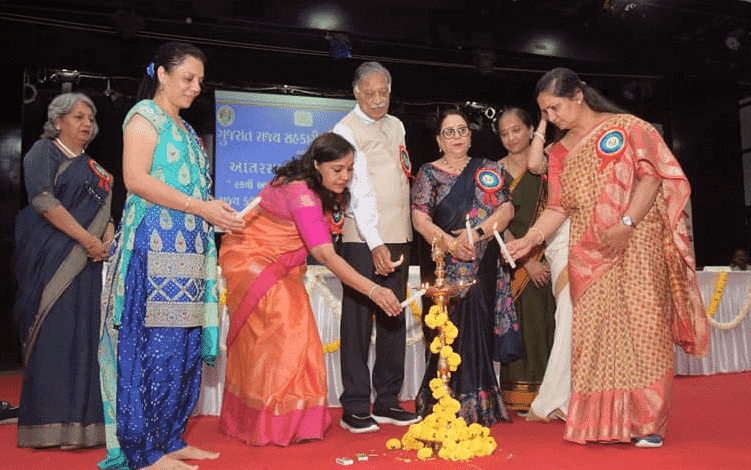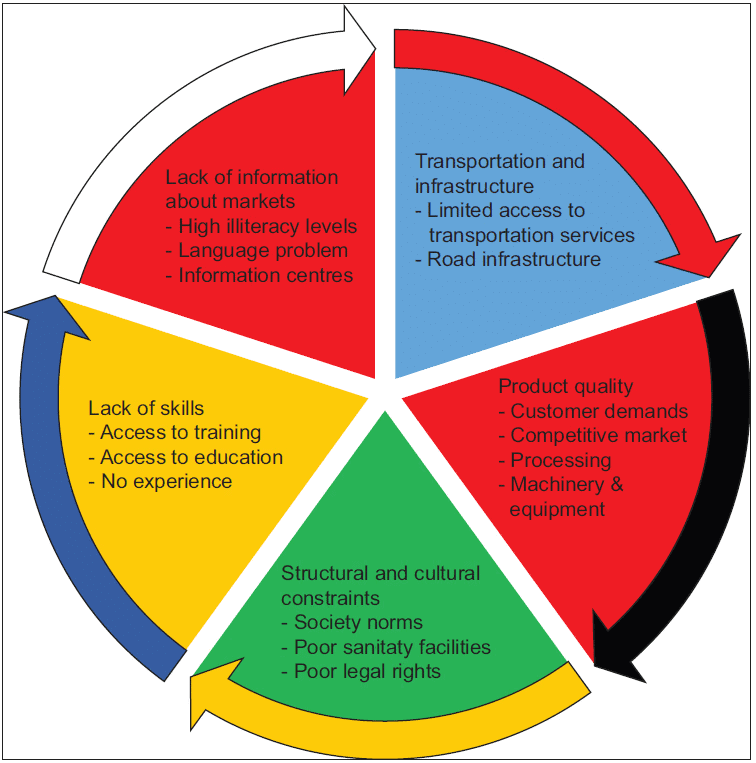Indian Society and Social Issues: May 2025 Current Affairs | Current Affairs & General Knowledge - CLAT PDF Download
Impact of Social Media on Young People

Why in News?
The rise of social media has highlighted significant concerns regarding its effects on youth identity and mental health. As young individuals increasingly seek validation through online interactions, issues such as anxiety and distorted self-image have surged, underlining the need for a critical examination of social media's role in shaping their lives.
Key Takeaways
- Social media influences the self-perception and mental well-being of youth.
- The impact of social media extends to societal, economic, and regulatory dimensions.
Additional Details
- Impact on Indian Society: Social media has disrupted traditional media by empowering citizens to share real-time news and opinions. During the Covid-19 crisis, platforms like Twitter were used by healthcare professionals to address urgent issues, such as oxygen shortages.
- Governments utilize social media for direct engagement with the public, as evidenced during the 2024 Lok Sabha elections in India.
- Social media has amplified marginalized voices, exemplified by movements like the MeTooIndia campaign, where women reported harassment across various sectors.
- Impact on Indian Economy: Social media is a driving force in India's digital economy, benefiting small businesses, startups, gig workers, and influencers. For instance, home chefs leverage platforms like WhatsApp to market their products.
- The creator economy, which includes YouTube and Instagram influencers, expanded significantly, growing from 962,000 creators in 2020 to 4.06 million in 2024, now supporting 8% of the workforce.
- India's creative economy is valued at USD 30 billion in 2024 and contributes 2.5% to the GDP.
- Recent initiatives, such as the government’s USD 1 billion fund, aim to support creators through capital and skill development.
- In addition to these impacts, social media also plays a vital role in promoting digital payments and the formalization of the economy, as seen with WhatsApp Pay streamlining transactions.
How is Social Media Regulated in India?
- Information Technology Act, 2000: This act serves as the primary legislation for electronic governance, including social media. It grants intermediaries liability exemption for third-party content under certain conditions.
- Information Technology (Intermediary Guidelines and Digital Media Ethics Code) Rules, 2021: These rules mandate online safety measures, the removal of inappropriate content, and user education regarding privacy and national security.
- Judicial Stand: Notable cases, such as Shreya Singhal v. Union of India (2015), have upheld freedom of expression on social media, while K.S. Puttaswamy v. Union of India (2017) emphasized the need for data protection laws.
What Concerns are Associated with Social Media?
- Mental Health Deterioration: Risks include anxiety, depression, and loneliness, exacerbated by the pressure for validation and the fear of missing out (FOMO).
- Performance culture on social media can suppress genuine emotions, making it difficult for young people to express vulnerability or seek help.
- Ethical Concerns: Social media can distort identity among youth, encouraging them to curate their self-presentation for public approval, leading to confusion and emotional distress.
- Parental Disconnect: Many adults lack understanding of the digital landscape their children navigate, leading to increased secrecy among teens.
- Child Exploitation: Young influencers can be exploited for content generation, facing performance pressure before reaching emotional maturity.
- Cyberbullying: Issues such as anonymous harassment and deepfake abuse are prevalent, posing significant risks to young users.
What Measures can Address the Challenges of Social Media for Young People?
- Social Media Policy for Youth Protection: Platforms should adjust algorithms to promote educational and positive content for users under 18.
- Prohibit behavioral profiling of minors for targeted ads, ensuring users can customize their content preferences.
- Digital Literacy: Implement a National Digital Literacy Program to include cyber safety courses in school curricula.
- Strengthen Governance & Accountability: Enforce the DPDP Act, 2023, to protect children's data and establish rapid response mechanisms for cyberbullying complaints.
- Promoting Mental Health Awareness: Social media platforms should introduce tools like screen time reminders and well-being resources.
In conclusion, the growing influence of social media necessitates urgent regulation, digital literacy, and ethical platform design. While it presents opportunities for innovation, unchecked use can cause harm. A collaborative approach that involves parental engagement is essential to ensure meaningful and safe digital experiences for young people.
Mains Question
Q: Social media is both a tool for empowerment and a threat to mental health. Examine.
Participation of Women in Cooperatives

Why in News?
Despite India being one of the largest cooperative movements in the world, with approximately 8.5 lakh cooperatives, women-only cooperatives still account for only 2.52% of the total, according to a NITI Aayog report (2023). The UN has declared 2025 as the International Year of Cooperatives with the theme “Cooperatives Build a Better World,” launching it globally in 2024 in India.
Key Takeaways
- India has a significant cooperative movement, yet women's representation in cooperatives is minimal.
- The UN's International Year of Cooperatives in 2025 aims to promote cooperative principles globally.
Additional Details
- Cooperative Societies: A cooperative society is a voluntary, member-owned organization designed to meet common economic, social, and cultural needs through self-help, mutual assistance, and community welfare, distinct from profit-driven enterprises.
- Evolution of the Cooperative Movement:
- Pre-Independence Era: Informal cooperatives like chit funds and nidhis existed, formalized through the Cooperative Credit Societies Act, 1904, and expanded by the Cooperative Societies Act, 1912.
- Post-Independence Era: Strengthened through Five-Year Plans and the establishment of National Cooperative Development Corporation (NCDC) in 1963 and NABARD in 1982.
- Legal and Constitutional Backing: Key legislations include the Multi-State Cooperative Societies Act (1984 & 2023) and the National Policy on Cooperatives (2002).
- Recent Developments: The Ministry of Cooperation was established in 2021, emphasizing the government’s commitment to enhancing cooperative societies.
Cooperatives play a vital role in empowering women economically and socially, yet significant challenges exist. The International Year of Cooperatives in 2025 provides a crucial opportunity to address these challenges and enhance women's roles in cooperative movements.
What is the Significance of Cooperatives in Women Empowerment?
- Pathway to Socio-Economic Empowerment: Cooperatives provide rural women with low-threshold entry into income-generating activities, accessible livelihood options, fair pricing, skill development, and inclusive governance.
- Successful Models: Examples include the Self-Employed Women's Association (SEWA) and Lijjat Papad, showcasing how cooperatives foster economic self-reliance and social upliftment for women.
- Access to Services & Financial Inclusion: Women’s cooperatives enhance access to credit, banking, insurance, healthcare, and education, bridging service delivery gaps.
- Social Capital and Community Resilience: Cooperatives foster trust, reciprocity, and shared responsibility, helping women build resilience against socio-economic challenges.
What are the Challenges Faced by Women’s Cooperatives in India?
- Structural Constraints: Approximately 50% of women’s cooperatives are dormant due to inadequate institutional support and poor financial linkages.
- Time Poverty and Unpaid Labour: Women disproportionately bear the burden of unpaid domestic work, limiting their participation in cooperative activities.
- Lack of Skills & Underrepresentation: Low literacy and limited training hinder women’s involvement in leadership and decision-making roles.
- Cultural and Social Norms: Deep-rooted societal norms often restrict women’s autonomy, particularly in rural areas, affecting their ability to engage in cooperatives.

What Measures Can be Taken to Empower Women Cooperatives in India?
- Institutional and Financial Support: Revive dormant cooperatives through professional guidance and ensure dedicated funding and market linkages.
- Capacity Building and Training: Provide training in governance, finance, digital literacy, and marketing to boost women’s participation.
- Recognizing Unpaid Work: Promote shared domestic roles and community childcare to reduce the unpaid work burden on women.
- Policy Integration and Technological Innovation: Ensure policy convergence across various ministries to streamline support for women’s cooperatives.
Cooperatives have the potential to transform the socio-economic landscape for women in India. Empowered women-only cooperatives, with proper resources and training, can drive significant economic and social change. The International Year of Cooperatives in 2025 offers a timely opportunity to reshape policies and empower women at the forefront of this movement.
Mains Question
Q: Examine the role of women cooperatives in empowering rural women in India. Discuss the challenges they face and suggest measures to improve their effectiveness.
|
122 videos|947 docs|37 tests
|
FAQs on Indian Society and Social Issues: May 2025 Current Affairs - Current Affairs & General Knowledge - CLAT
| 1. What are the positive effects of social media on young people? |  |
| 2. What are the negative impacts of social media on young people? |  |
| 3. How can social media be used positively by young people? |  |
| 4. Why is the participation of women in cooperatives important for Indian society? |  |
| 5. What social issues are currently affecting Indian society in 2025? |  |
















